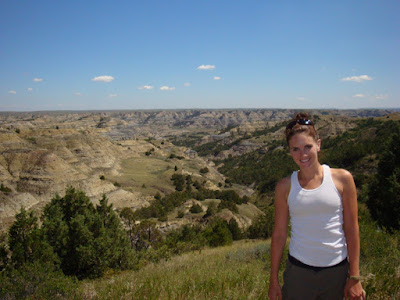Today we returned to Rattlesnake Butte for the third year in a row, looking for mammal jaw fragments from the Paleocene (~65 million years old). Because we have found almost half a dozen mammal jaw fragments (some with teeth) over the past two years, we returned to the site hoping for more. Jacob, Walter and Eric are photographed sending shovelfuls of dirt and overburden through a sifter. Like breaking up flour with a sifter, we passed the matrix sand through a thin wire mesh hoping that anything slightly larger like mammal teeth and/or jaws will remain. This is a very dirty job!

After spending the day painfully picking through sand and organic shale packed full with coal, we finally found a mammal jaw fragment. Well, Walter found one on the surface of the hill after we had sifted and dug through dirt all day. As you can see in this picture, Ariel and I had a thick coating of grime before the day was done.

Tomorrow part of the group will depart north to camp in the Roosevelt State Park while looking for Paleocene mammal fossils. We will be roughing it completely sans electricity and other luxuries (shower, stove, running water, blogging etc). That said, I won’t be writing again until our return on Friday! Wish us luck!
































